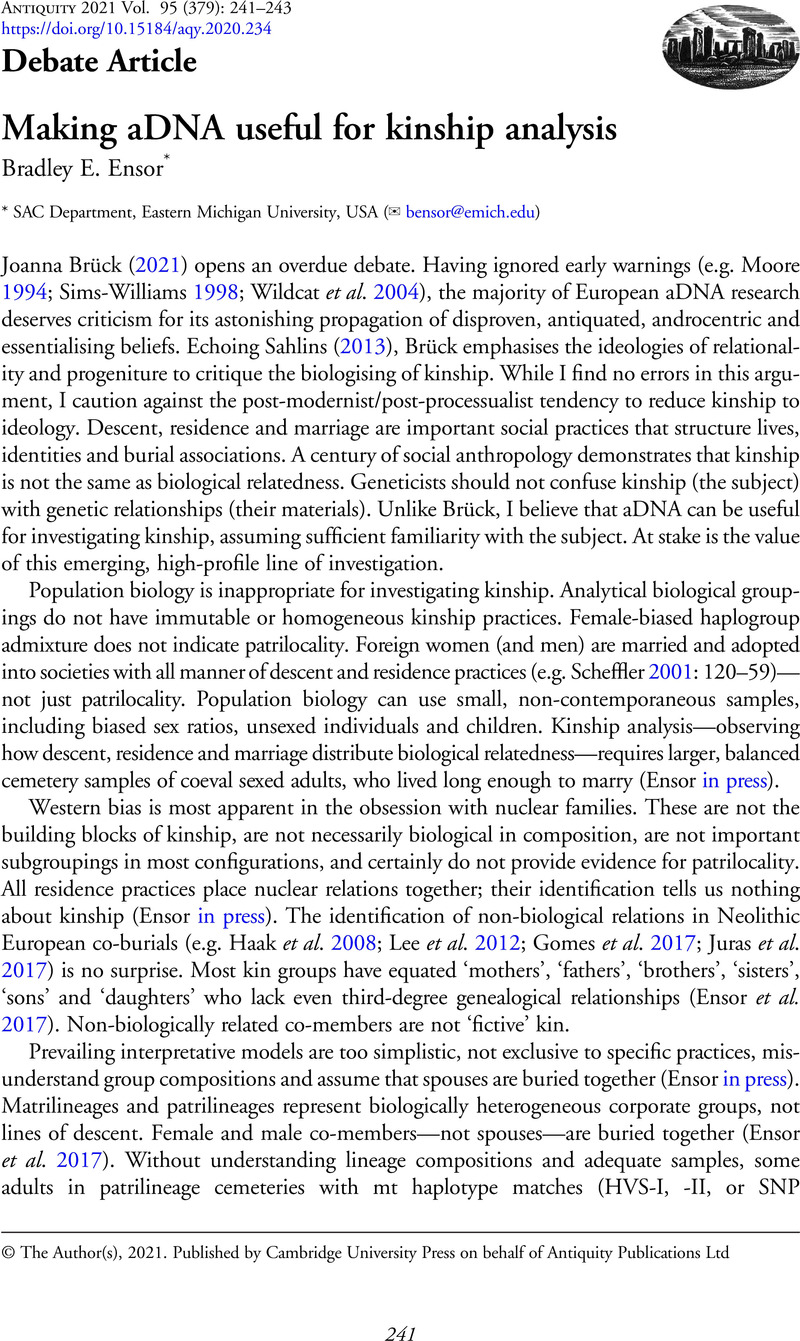Crossref Citations
This article has been cited by the following publications. This list is generated based on data provided by Crossref.
Brück, Joanna
2021.
Kinship: politics and practice.
Antiquity,
Vol. 95,
Issue. 379,
p.
249.
Fowler, Chris
2022.
Social arrangements. Kinship, descent and affinity in the mortuary architecture of Early Neolithic Britain and Ireland.
Archaeological Dialogues,
Vol. 29,
Issue. 1,
p.
67.
Bentley, R. Alexander
2022.
Prehistory of Kinship.
Annual Review of Anthropology,
Vol. 51,
Issue. 1,
p.
137.
Cintas-Peña, Marta
Garrido Pena, Rafael
Herrero-Corral, Ana M.
Flores Fernández, Raúl
Waterman, Anna J.
Díaz-Zorita Bonilla, Marta
Díaz-del-Río, Pedro
and
Peate, David W.
2023.
Isotopic Evidence for Mobility in the Copper and Bronze Age Cemetery of Humanejos (Parla, Madrid): a Diachronic Approach Using Biological and Archaeological Variables.
Journal of Archaeological Method and Theory,
Figueiro, Gonzalo
2024.
Simulating the effects of kinship and postmarital residence patterns on mitochondrial DNA diversity in mortuary contexts.
American Journal of Biological Anthropology,





